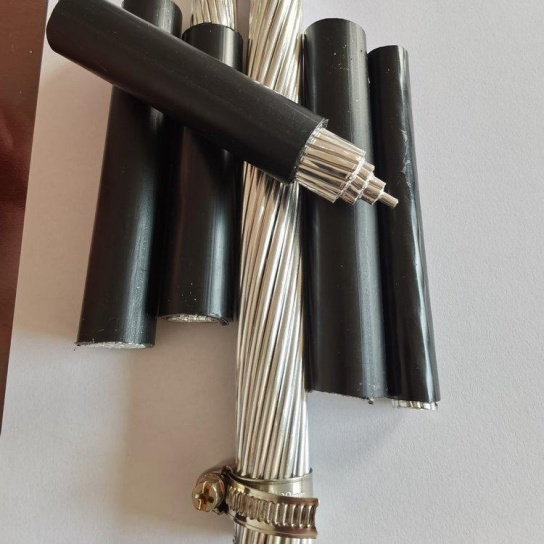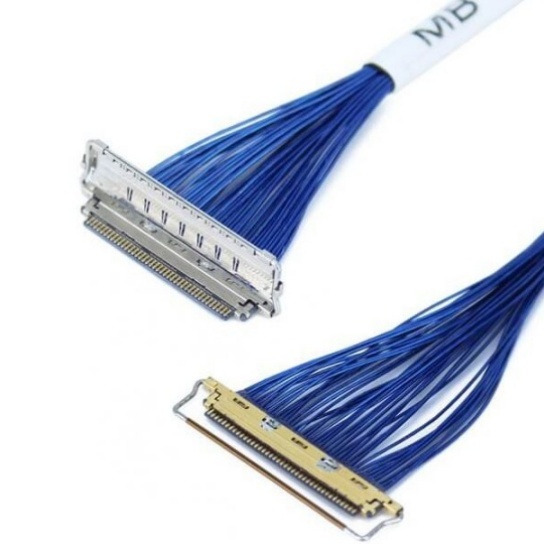Hypersonic Missiles Need 2,000°C-Resistant Cables: The Material Race at the Edge of Physics
Imagine a missile hurtling through the atmosphere at speeds exceeding Mach 5 – faster than a mile every second. This is the realm of hypersonic flight, where air friction doesn’t just cause drag; it generates temperatures exceeding 2,000°C (3,632°F) – hotter than volcanic lava. At these extremes, ordinary electronics melt, communications fail, and the weapon becomes blind and uncontrollable. This isn’t science fiction; it’s the critical barrier preventing hypersonic missiles from achieving their full potential. Their success hinges on one underestimated component: specialized cables capable of surviving the inferno.
Why 2,000°C? The Physics of Hypersonic Heat
The phenomenal temperatures encountered by hypersonic vehicles aren’t just from engines. Aerodynamic heating is the primary culprit. As air molecules collide with the vehicle’s surface at immense speed, their kinetic energy transforms into intense heat. Key points include:
- Mach Number Dependency: Heating increases exponentially with speed. While supersonic flight (Mach 1-5) generates significant heat (hundreds of °C), crossing Mach 5 sends temperatures soaring past 1,500°C, easily reaching and exceeding 2,000°C at the leading edges (stagnation points) and control surfaces of missiles.
- **”White-Hot” Challenges:** At 2,000°C, most conventional metals (like copper, aluminum, steel) melt or soften catastrophically. Standard polymers and insulation used in aircraft wiring vaporize instantly. Electronic components and sensors, essential for guidance and maneuverability, cease to function without protection.
Existing Cable Solutions Fail the Hypersonic Test
Current aerospace wiring relies heavily on materials like PTFE (Teflon™), Kapton™, or silicone insulation with copper conductors. While robust for conventional jets, these are woefully inadequate:
- Material Limits: PTFE decomposes around 260°C. Silicone rarely withstands beyond 200-250°C continuously. Kapton™ polyimide films, while higher performing (up to ~400°C short-term), char and lose integrity well below hypersonic needs.
- Conductor Vulnerability: Copper melts at 1,085°C. While some nickel alloys have higher melting points, they are heavier and less conductive. Loss of signal integrity or complete conductor failure is guaranteed at hypersonic skin temperatures.
- Systemic Risk: Cable failure isn’t just an isolated issue. Melted insulation causes shorts. Broken conductors sever control links. Overheated wires destroy adjacent sensitive components. This renders the weapon’s guidance, communication, and maneuvering systems inoperable – essentially a mission-kill.
The Search for Super-Cables: Materials at the Forefront
Developing cables for the hypersonic environment means pushing material science to its absolute limits. Researchers focus on:
- Ceramic Matrix Composites (CMCs) for Insulation: Using materials like alumina (Al₂O₃, melting point ~2050°C), zirconia (ZrO₂, ~2700°C), or silicon carbide (SiC) fibers embedded in ceramic matrices. These offer exceptional thermal stability and electrical insulation at ultra-high temperatures. The challenge is creating flexible ceramic-based cables that withstand vibration and stress without cracking.
- Refractory Metal Conductors: Employing exotic metals like tungsten (W, melting point 3422°C) or rhenium (Re, 3186°C) for the wire core. While these resist melting, they are denser (adding weight), less conductive than copper, and can be brittle at lower temperatures. They also require compatible insulation materials that won’t react with them at extreme heat.
- Carbon Nanotubes (CNTs) & Graphene: These revolutionary materials offer outstanding thermal conductivity and high electrical conductivity rivaling copper, combined with potential thermal stability in inert atmospheres exceeding 2000°C. Integrating them into practical, robust, production-ready cable structures remains a significant R&D hurdle.
- Advanced Thermal Management: Beyond materials, novel cooling techniques integrated into the cable design or the surrounding structures are being explored to manage peak heat loads, potentially easing requirements on the cable materials themselves.
Beyond Insulation: System Integration Challenges
Creating a single 2000°C-resistant cable is groundbreaking, but integrating it into a functional system is another monumental challenge:
- Connectors: Plugs, sockets, and terminals must also withstand the extreme heat and thermal cycling without degrading contact integrity or creating short circuits. Finding robust, conductive, and temperature-resistant connector materials and designs is critical.
- Sensors & Electronics: Ultimately, cables connect to temperature-sensitive components. Developing compatible sensors, antennas, and computational units capable of operating near these cables in the thermal environment requires integrated extreme-environment electronics, potentially using specialized semiconductors like Gallium Nitride (GaN) or Silicon Carbide (SiC), alongside innovative thermal protection systems.
- Weight vs. Performance: Hypersonic missiles demand maximum speed and agility. Adding heavy cables or bulky thermal protection counters these goals. The solution lies in advanced lightweight composites that meet both thermal and structural requirements simultaneously.
The Strategic Stakes: Why This Race Matters
The nation or alliance that master 2000°C cable technology gains a decisive military edge. Reliable hypersonic missiles mean:
- Unprecedented Deterrence: Ability to hold critical assets anywhere on the globe at risk within minutes.
- Penetration of Defenses: Speed and maneuverability make interception by current missile defense systems vastly more difficult.
- Technical Leadership: Mastering this technology signals advanced prowess in materials science, aerospace engineering, and systems integration – capabilities with vast commercial and defense applications (e.g., super-fast commercial travel, reusable spaceplanes).
Conclusion: Material Science is the Hypersonic Bottleneck
Hypersonic missiles represent a paradigm shift in military technology, but their effectiveness is shackled by the limitations of existing wiring. The quest for 2,000°C-resistant cables isn’t about minor upgrades; it’s a fundamental material science revolution demanding breakthroughs in ceramics, refractories, nanomaterials, and cooling systems. Overcoming this thermal barrier isn’t just about connecting wires; it’s about preserving the nervous system of weapons operating at the edge of physics. The intense heat of hypersonic flight poses an undeniable challenge, but the global race to develop the necessary cables highlights that this hurdle is the critical gateway to unlocking the true potential of hypersonic systems. As research in extreme-temperature aerospace materials accelerates, the solutions forged in this furnace will define the future of high-speed flight and national security.
Key Takeaways:
- Hypersonic flight (>Mach 5) generates skin temperatures exceeding 2,000°C (3,632°F) due to aerodynamic friction.
- Standard aerospace cables (PTFE, Kapton™, Copper) instantly fail at these temperatures, melting and causing catastrophic system failure.
- 2000°C-resistant cables require revolutionary materials like Ceramic Matrix Composites (Alumina, Zirconia), Refractory Metals (Tungsten, Rhenium), or Carbon Nanotubes/Graphene.
- Developing practical cables involves major challenges in flexibility, electrical performance, weight, manufacturing, and system integration (connectors, sensors).
- Mastering this technology is strategically critical for enabling functional, reliable hypersonic weapons systems and next-generation aerospace platforms.






